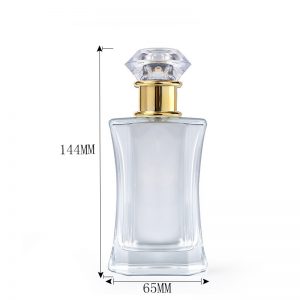The evolution of cosmetic bottle design has been a dynamic process driven by various factors, including advancements in technology, changes in consumer preferences, sustainability considerations, and branding strategies. Here are some key stages in the evolution of cosmetic bottle design:
- Early Glass and Ceramic Bottles: In the early days, cosmetic bottles were often made of glass or ceramic materials. These bottles were simple in design, functional, and intended for reuse. They often featured intricate patterns and designs, showcasing the craftsmanship of the era.
- The Rise of Plastics: With the invention of plastics in the early 20th century, cosmetic bottle design underwent a significant transformation. Plastic bottles were lighter, cheaper to produce, and more versatile in terms of shape and size. This allowed for more creative and innovative designs.
- Modern Industrial Design: In the mid-20th century, industrial design principles started influencing cosmetic bottle design. Designers focused on form and function, creating bottles that were not only visually appealing but also easy to use and store.
- Branding and Marketing: As branding and marketing became essential in the cosmetic industry, packaging played a crucial role in conveying a brand’s identity and message. Bottles started featuring brand logos, unique shapes, and color schemes to create a recognizable brand image.
- Customization and Personalization: With advancements in manufacturing technology, customization and personalization became more accessible. Brands started offering customizable bottle designs for limited editions or special releases, enhancing consumer engagement.
- Eco-Conscious Packaging: In response to growing environmental concerns, cosmetic brands began exploring eco-conscious packaging alternatives. This led to the adoption of sustainable materials, biodegradable plastics, and refillable or reusable bottle designs.
- Innovative Dispensing Systems: Cosmetic bottles evolved to include various innovative dispensing systems, such as pump dispensers, airless pumps, droppers, and roll-on applicators. These dispensing systems provided more precise and controlled application of products.
- Minimalist and Luxury Packaging: In recent years, minimalist and luxury packaging styles have gained popularity. Simple and elegant bottle designs with premium materials and finishes are favored by luxury and high-end cosmetic brands.
- Digital Integration: The digital era has influenced packaging design by incorporating elements like QR codes, augmented reality, and NFC tags on bottles. These features enhance the consumer experience and provide access to additional product information.
- Emphasis on Sustainability: In the late 2010s and beyond, sustainability has become a significant focus in cosmetic bottle design. Brands are increasingly using recycled materials, reducing packaging waste, and adopting eco-friendly practices to align with consumer demands for greener options.
The evolution of cosmetic bottle design reflects the ever-changing demands of consumers and the industry’s commitment to innovation and sustainability. As technology continues to advance and consumer preferences shift, cosmetic bottles will likely continue to evolve to meet the needs of a dynamic market.
















